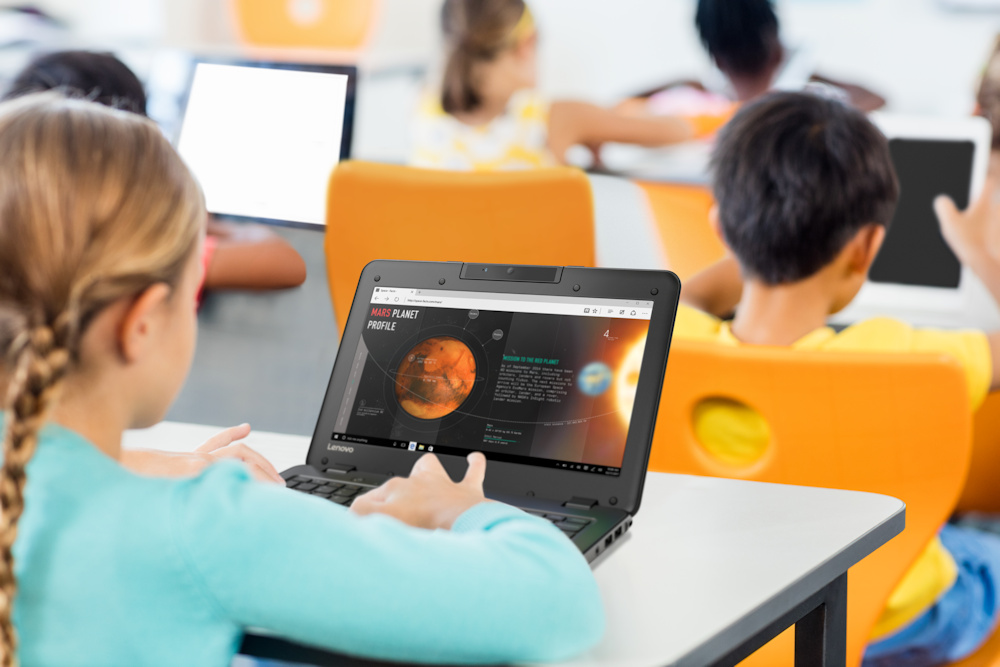EdTech
Tech companies can transform the classroom
By THIBAULT DOUSSON, general manager of Lenovo South Africa
The topic of technology in our classrooms is not a new one, but it has of course resurfaced in recent months with the pandemic putting the focus squarely on digital in every arena in our lives. HolonIQ reports that schools and training centres are allocating more money and resources to digitise education, with global tech spend forecasted to increase from $152 billion in 2018 to $342 billion in 2025.
When it comes to tech and education in South Africa, however, one of the issues that are of concern to everyone is the widening of the digital divide. While for the lucky few the drive to digital became accelerated in some classrooms because of the pandemic, for many learners it remains painfully slow. South African learners were among the 1.5 billion students who were forced to stay home in 2020 due to school closures during the Covid-19 pandemic. This figure, according to UNESCO, represents over 90% of the world’s learners.
Schools in our country are faced with multiple challenges in terms of education and tech, which all existed pre-pandemic. One of the most significant barriers is of course budget, which is at both individual school level and departmental level. Another is the use of technology, where decisions need to be made on what the specific needs of individual schools are and the best tech tools to address those gaps. For this to occur, accurate assessments on each school’s levels of technological readiness need to be conducted.
In addition, teachers need to be upskilled in the use of various technologies and this training needs to remain current as tools evolve. And last but definitely not least there is the hurdle of safety and security, where educational institutions with tech tools remain targets of theft.
There is much work to be done, therefore, before we start, or in some places continue, to institute technological transformation.
As with many issues that need to be tackled in our country, partnership is key to addressing these challenges and helping us go beyond the white pages of the Education Charter. The primary way where a company like Lenovo can help in this drive to digital is access to technology and equipment. This access can take the form of providing infrastructure, such as servers, storage and connectivity; providing learning devices, namely PCs, tablets and laptops; as well as ensuring device security, for example geolocation lock, passwords and other encryptions. Tech companies can also assist with deploying the technological solutions and providing support.
On the other side of the partnership coin is the Education Department and other stakeholders. While a company like Lenovo can facilitate access, the Department should focus on the learning and content side. This includes digitalising the content and curriculum, setting up the learning management system, providing training and development for teachers, and developing apps for learning.
What is important to bear in mind, too, is that digitising learning, as my comments above suggest, isn’t just about handing out tablets and putting PCs into classrooms. IT is the key to more efficient and effective productivity everywhere, and this is where the education ecosystem comes in. In my mind, this consists of four elements – infrastructure, administration, instruction and curricula. Good instruction, such as labs and libraries for example, is only enhanced by digital textbooks, online coursework and online assessments. Solid IT infrastructure like data warehousing and servers make school administration like HR systems far better.
As a technology company, Lenovo uses an integrated product development process that brings together hardware, software, and security engineering expertise early and drives it throughout the design and development. Our security and compliance priorities are being built into marketing requirements and supported through the use of industry-standard certified components and features, and special attention is paid to BIOS design to ensure secure BIOS configuration and management. Design and engineering are done by qualified original design manufacturers (ODMs).
In addition, Lenovo is partnering with LanSchool, a software solution that delivers powerful digital classroom orchestration for teachers for both primary and secondary schools. It addresses control and security of students’ hardware, so is key for South African schools. We offer the first year for free when schools purchase our products.
I want to emphasise again that it is only through partnership and an appropriate assessment strategy that we can help to minimise the digital divide in our schools. A solid IT plan integrated into the Department of Education’s broader strategy is necessary to truly achieve transformation, and tech can help provide the tools to make education delivery stronger and more in line with a competitive world. We must remember, after all, that the future is global. South African children are not only competing against one another – they are in competition with kids from all four corners of the globe. According to Holon IQ, the next decade will see an additional 350 million post-secondary graduates across the globe.
Only a countrywide, integrated IT strategy in the classroom can truly help South Africa in its digital transformation drive.
It’s a huge task, but we at Lenovo are here to help.

















